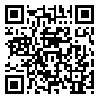BibTeX | RIS | EndNote | Medlars | ProCite | Reference Manager | RefWorks
Send citation to:
URL: http://jcp.khu.ac.ir/article-1-2630-en.html
The purpose of the present study was to compare the creativity and critical thinking between bilingual students of Persian-Armenian language and monolingual students of Persian language. The study method is causal-comparative. Statistical community is all Bilingual of Persian-Armenian language and monolingual of Persian language students in first year of high school in the Tehran city in the 1393-94 academic year. The sample group is included 120( 60 monolingual students and 60 bilingual students and each group consisted of 30 male and 30 female) that were selected by multistage cluster sampling method. To collect data used from Abedi creativity test and California critical thinking skills test. Data using independent sample t-test were analyzed. The results showed that there is not significant difference between monolingual and bilingual students in creativity and it subscales (including fluency, elaboration, originality and flexibility) and critical thinking and it subscales (including analysis, inference, evaluation, deductive reasoning and inductive reasoning) mean scores. Also there is not significant difference between male and female students in critical thinking and it subscales mean scores and creativity and it subscales with the exception of flexibility subscale. Mean scores of female students in flexibility from creativity subscales was higher than of male students. In explaining these results we can say that due to the not found significant difference between creativity and critical thinking of monolingual and bilingual students as two cognitive skills, Therefore, bilingualism is not a defect and obstacle for bilingual students cognitive development and with proper educational strategy bilingualism becomes an opportunity for the cognitive skills development.
Received: 2016/12/25 | Accepted: 2016/12/25 | Published: 2016/12/25
| Rights and permissions | |
 |
This work is licensed under a Creative Commons Attribution-NonCommercial 4.0 International License. |




